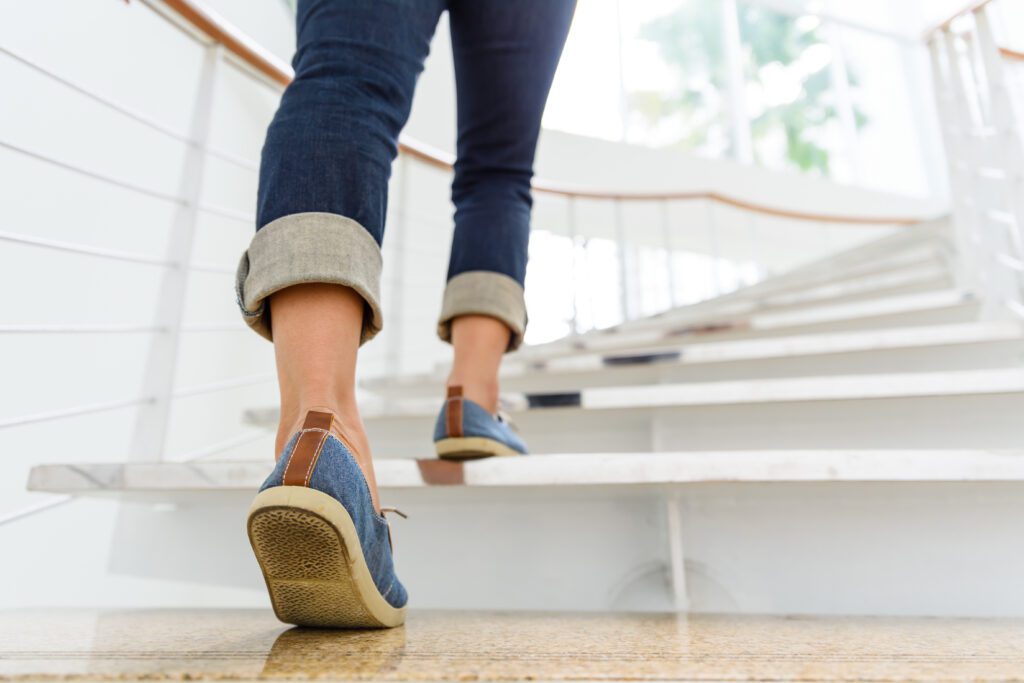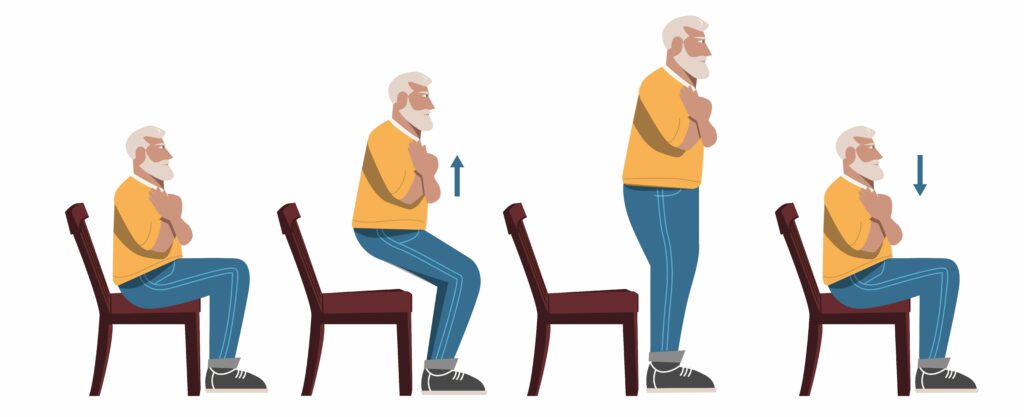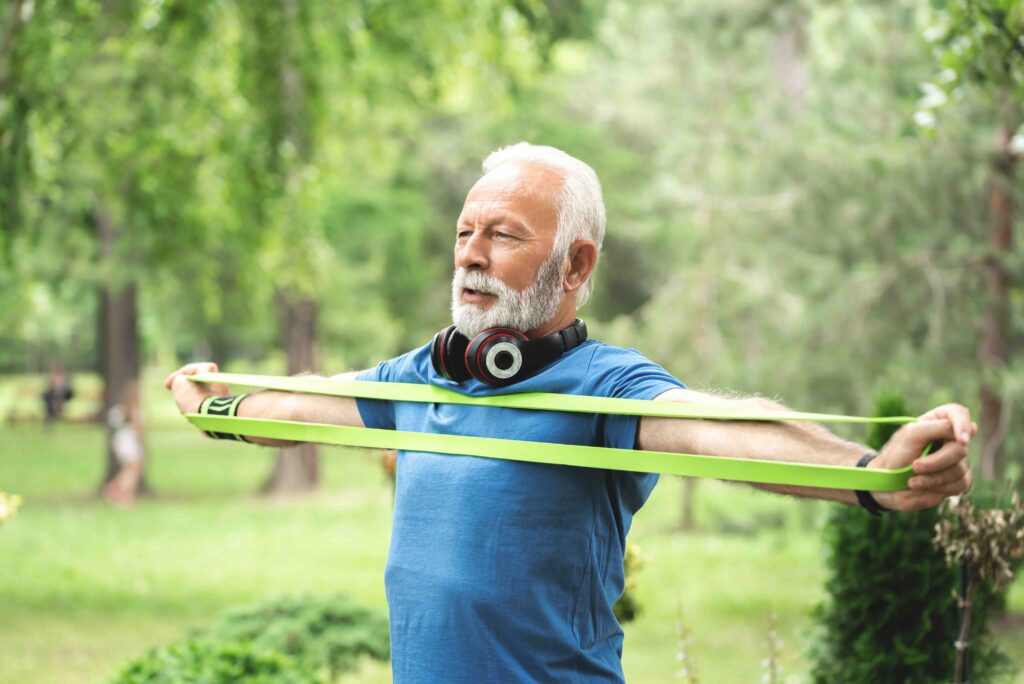With a New Year comes a wish to improve health and mobility, especially if you are heading into the older year groups. In recent years, Sports Science research has started to look more at the older age groups, considering why we struggle with mobility, falls and pain as we age. As a result, the evidence around strength training in the older years is becoming unequivocal. In this article we will look at why strength training is so important for healthy aging and how to get started.
Muscle strength in aging
There is a constant turnover of muscle in the body as we build and breakdown muscle fibres. When we are young, our bodies are creating muscle at a rapid rate. They do this to help us grow. As we get to our 20’s, and hit full maturity, this growth slows down and we start to build and break down muscle at a similar rate.
This continues until our 40’s when the body starts to age and we slowly start the transition to breaking down more muscle than we are building. Fast forward to our 60’s and 70’s and unless we do something to slow the muscle decline, we begin to become weaker and more frail.
This is where the world of strength training really becomes important. We can’t stop the physiological process, but we can slow its affects. No matter what your age, your body will adapt to strength training by increasing its muscle mass, and this is great for healthy aging.
Building muscle after 50
Healthy aging is important. Most falls are caused by weakness, mobility issues are caused by weakness, even tiredness can be attributed to weakness of muscles. So how do we safely start to strength train as we get older.
Strength training can seem daunting, but to get a muscle to strength, you simply need to overload it. Many of our clients use walking to stay healthy in their older years, and although this is great for cardiovascular health, it is doing little to strengthen muscles. Overloading a muscle involves it doing more work than is usual. So if you usually walk around town on a flat level surface and you started to walk a hill every day, this would overload your muscles, and as a result your muscles would get stronger. However, if you then only walked the same hill every day, your muscles would strengthen up to the point that they were no longer overloaded by walking up the hill. So they would no longer get any stronger. To continue to strengthen, you would either have to find a steeper hill, or a longer hill, so your muscles can do more work.
As you can see this would eventually become impractical and this is why most people use bands or weights to help them to strength train. As your muscles adapt, you simply increase the weight to continue to overload the muscles.
Strength training and bone health
Bone health is essential to healthy aging especially in women. Our bone density is the amount of bone we have and this is laid down in the early years of life. The more active we are when we are younger, the more dense our bones are, and as a result, the longer it takes to deplete our bone strength as we age.
Osteoporosis, is often seen in women and can lead to bone fractures due to low bone density. If you have Osteoporosis, it is important that you start any strength training slowly, so you don’t cause any damage to the bone. At The Reinge Clinic we are experts in strength training and can create you a safe an effective training program.
To ensure healthy aging, it is essential to improve your bone density, and strength training can do this very effectively. As you lift a weight, the tendons tug on the bone where they attach. This tugging causes the body to lay down additional bone at this position, to give the bone enough strength to cope with this tugging. As many muscles are involved in most strength movements, this can have an effect on several bones at once. As a result, you not only improve your muscle strength, but your bone strength as well.
Osteoarthritis and strength training
Osteoarthritis is a condition where the bones of a joint begin to wear down and create pain. Many people will experience this at some point as they age. However, this condition can be helped by strength training. Osteoarthritis is often exacerbated by weakness of the muscles that surround a joint. If the muscles around the joint are not balanced, this can lead to forces running through the wrong part of the joint, creating damage and pain. Restrengthening the muscles around a knee or shoulder, for example, can clear much of the pain associated with Osteoarthritis.
So a general strength program to ensure balance throughout the body is a great thing to begin in your 50’s and 60’s to ensure healthy aging in your 70’s and 80’s. Take a look at how we approach Osteoarthritis here. This doesn’t need to be complicated, or require the use of a gym. Using resistance bands at home, can create the same effect as using a gym, and at a fraction of the cost.
Where to start with strength training?
If you are new to this it can feel quite daunting, however, strength training is simply overloading your body. You could grab a bottle of water and slowly lift it over your head and you are creating overload in your muscles, which will result in increased strength.
Speed is important in strength training. If you lift weights quickly, you will use momentum rather than your muscles, and this will not result in increased strength. Here are a few simple ideas for building strength.
Stair walking for strength:

This sounds simple and it is. Climbing stairs is a simple and effective way to increase your leg strength, but not if you do it quickly. Try to walk your stairs as…slowly…as…possible. You will be surprised how hard it is. Walking stairs very slowly involves many important strength elements, you have to balance on one leg for a period of the movement, you have to push yourself up with your leg muscles as you step up, and you have to use your core muscles to ensure you don’t fall over.
Walking down stairs is just as effective, but only if you do it slowly. Try to ensure your knee tracks straight over your feet, rather than dropping inwards as you stair climb. Doing this slowly will overload your muscles and create strength gains. Of course, at some point it will get easy and you will need to overload your body again, so grab something heavy and try to walk slowly up the stairs while carrying the item. Shopping bags work very well here! This is great for healthy aging as the first thing people tend to struggle with is climbing stairs.
Getting up from a chair for strength:

This is again a great exercise to build strength in the legs. Sit on a chair, and without using your hands stand up … very… slowly… Once you are standing try to do the same sitting. Many people start well but then collapse into the chair at a certain point. The aim is to be able to do this with full control, slowly and without using your hands!
You can make this harder by holding a weight. You can move it on even more by trying to get up from a lower chair, or from the floor. If you can’t do it at all, start by using a taller chair or stool. If you still can’t get up, start this exercise by trying to sit with control. Once you have mastered that, then try standing. It generally requires less strength to sit, than to stand! This is a great exercise for healthy aging as being able to get up from a chair is essential as you age.
Using bands for strength:

Bands are the ultimate form of home strengthening. Resistance bands come in many strengths, usually the easiest is a yellow coloured band and black is the most difficult. But they vary from manufacturer to manufacturer. There is no limit to what you can do with these bands. You can perform shoulder exercises, arm exercises, leg exercises and even back exercises. A quick internet search will show you many exercises to try. If you fancy this route, book in for a body assessment with us and we can check what your body needs and create an exercise plan to suit.
Hopefully we have shown in this article why healthy aging involves strength training. Everyone should be doing some form of strength training from their 50’s onwards, but if you are unsure what to do, or how to do it, get in touch and we can help you create an exercise plan that fits in with your situation.
#HealthyAging #StrengthTraining #FitnessOver50 #ActiveAging #SeniorFitness #StrongAtAnyAge #HealthyLifestyle #StayActive